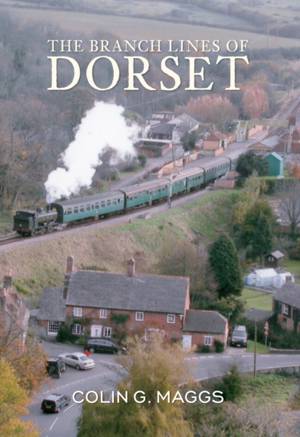
- Afhalen na 1 uur in een winkel met voorraad
- Gratis thuislevering in België vanaf € 30
- Ruim aanbod met 7 miljoen producten
- Afhalen na 1 uur in een winkel met voorraad
- Gratis thuislevering in België vanaf € 30
- Ruim aanbod met 7 miljoen producten
Zoeken
Omschrijving
The branch lines of Dorset, shared almost equally between the GWR and LSWR, varied from lightly built, rural railways carrying a low volume of traffic, to the Swanage branch, which at times carried main line express locomotives. Fortunately this line has been preserved and can still be enjoyed today. Many Dorset branches served seaside resorts, while other lines were principally, or solely, for industrial or military use. The county had an unusual number of lines running to quays, two passing through streets for a mile and mingling with other traffic.One such interesting branch was the Weymouth Harbour Tramway, which carried the Channel Islands Boat Express through the back streets of the town, as well as dealing with tomatoes, potatoes and other produce. All the Dorset branches are described in this absorbing, entertaining and well-researched book. Colin G. Maggs, foremost railway historian, provides a marvellously wide-ranging view of over 150 years of rail travel. Anecdotes of branch life and the people who ran them enrich the narrative throughout, including the story of the vanishing train driver - and his later appearance in court. The main railway routes are given a brief account before each branch is looked at in detail. Profusely illustrated with over 200 fascinating photographs, maps and ephemera, this book will appeal not only to railway enthusiasts, but to local historians and model makers.
Specificaties
Betrokkenen
- Auteur(s):
- Uitgeverij:
Inhoud
- Aantal bladzijden:
- 160
- Taal:
- Engels
- Reeks:
Eigenschappen
- Productcode (EAN):
- 9781848683525
- Verschijningsdatum:
- 15/01/2012
- Uitvoering:
- Paperback
- Formaat:
- Trade paperback (VS)
- Afmetingen:
- 172 mm x 248 mm
- Gewicht:
- 420 g

Alleen bij Standaard Boekhandel
+ 53 punten op je klantenkaart van Standaard Boekhandel
Beoordelingen
We publiceren alleen reviews die voldoen aan de voorwaarden voor reviews. Bekijk onze voorwaarden voor reviews.








